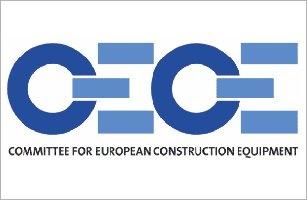CECE, the European industry federation, tells its customers what to look for when various categories of contractors plant are acquired
Information is available in handy pdf form so businessmen throughout Africa have full access at any time.
A useful series of guides to the purchase of construction equipment is available online courtesy of the Committee for European Construction Equipment*. All copy is available in Arabic and French versions as well as English, so most corners of Africa are covered.
Is this excavator compliant with European legislation? appeared in March 2010, one of the latest additions (July 2011) is the Tower cranes equivalent, and various other categories of equipment (including Compact excavators) are covered too.
Of course many of the rules outlined do not apply in Africa, but some do and a quick look at such a concise document is an excellent first step in making a wise purchase decision. Truly a handy 'What to look for' source of information, therefore.
The issue is how to identify machinery (new or, allowing for age and condition, used) which meets both current safety and environmental requirements. The guides “describe only those essential criteria which can be checked even without in-depth knowledge and technical information”.
With any form of medium-large digger, therefore, tracked or wheeled, the initial checks need to cover specification-plate markings, all supplied documents including operating instructions, emissions of particulates and noise, lifting safety considerations, necessary warnings and markings in the cabin, and access systems.
Identification of machine and manufacturer should be easily achieved via the specification plates which are usually visible once the engine hood is lifted. Engine power, machine weight and year of manufacture are usually nearly as prominent as the name and address of the manufacturer. Excavators which were not designed and built for the very demanding EU market will be missing a prominent CE marking. Examples of these spec plates are shown.
All Documents and Instructions must be provided in a language that is understandable to the purchaser or his agent. For EU sales an EC Declaration of Conformity is required, a very demanding requirement (specifying electromagnetic compatibility, for example). The basic features of a proper operating manual are that the machine markings themselves are repeated (with the exception of the serial number) and the instructions are identified as 'Original'. As well as covering all the obvious details, illustrated as appropriate, they should include measurement results for noise and vibration levels in the cab.
Engine exhaust emissions are not as yet a major issue in many sub-Saharan countries but this is a critical indicator of machine quality/suitability in most overseas markets; in Europe all excavators in the 18-560kW range have to comply. Illustrations and interpretations of the many types of information that appear on the engine data plate, including the emissions test method used, are included in this Compliant? guide.
Similarly Noise emissions are often overlooked here but, quite apart from the environmental considerations (especially critical where an excavator is being used on an urban site) this is important in terms of operator fatigue. So guaranteed maximum sound power level information must be very prominently stated together with engine output (acceptably in much smaller print). EU-compliant and non-compliant examples are illustrated, showing the limits which must not be exceeded.
Lifting safety issues matter highly because excavators are often used for this purpose, and many are specially equipped. If so fitted there should be special lifting points clearly identifiable on the bucket, with adequate hooks on both this and the link. A lift-capacity chart should be visible in the cab, along with hose burst protection valves on the boom cylinders.
All operators need to be able to instantly understand the various Warnings and markings they see when starting up and at work. Finally appropriate Access systems should be provided in the form of robust steps and handrails, with the latter being at least 0.85m above the platform level.
* follow links at www.cece.eu




